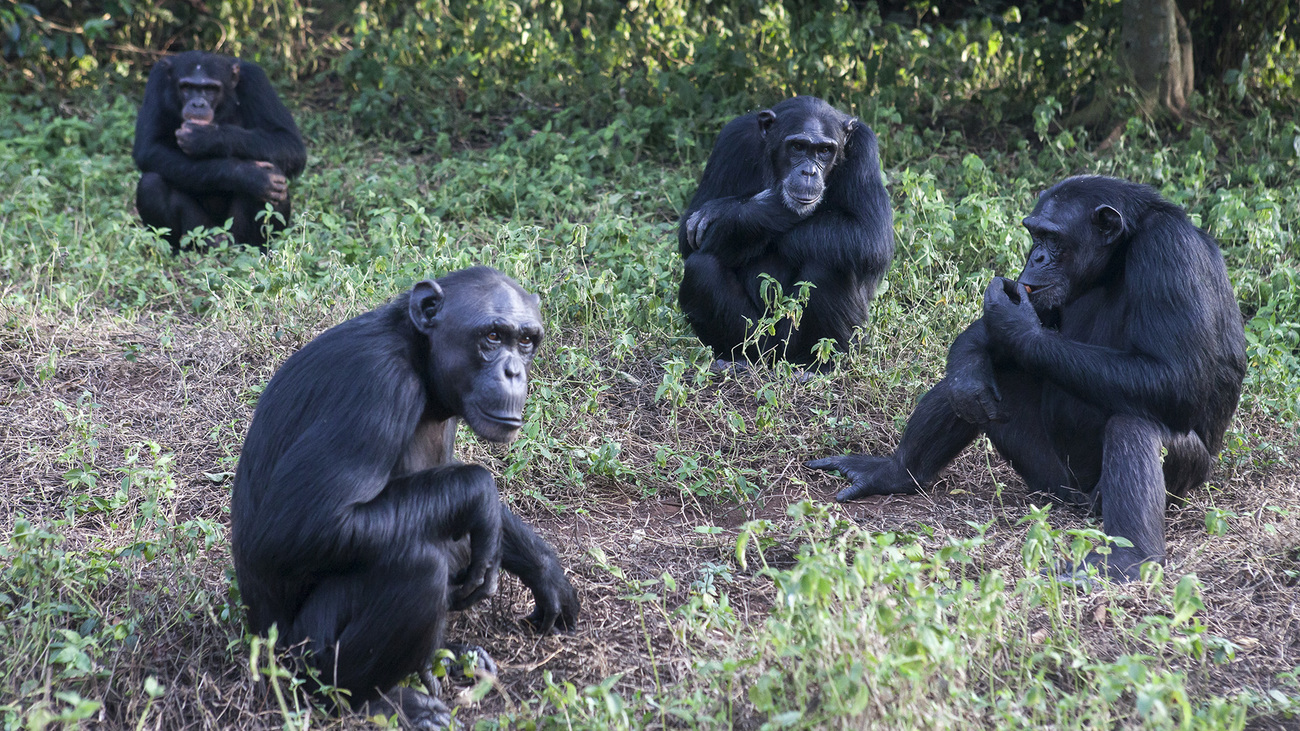Apes
Apes live in tropical forests in central Africa and Southeast Asia. They are split into two families, great apes and lesser apes. Both families are distinguishable from monkeys by their lack of tails. Unlike monkeys, apes have appendices and their brains are much more complex.
One tailless, appendix-bearing, and big-brained member of the great ape family is humans. Other members include gorillas, bonobos, chimpanzees, and orangutans—all of which share at least 97% of their DNA with humans.
Great apes are capable of many intelligent behaviours, such as recognising themselves in a mirror, learning sign language, and making simple tools. They spend most of their time on the ground and sleep at night in nests built in trees, though orangutans prefer to stay in the trees during the day too.
The lesser apes are also known as gibbons, of which there are around 20 species. They are much smaller than great apes, though they have longer arms, denser hair, and a throat sac used to amplify their musical voices. Gibbons’ brains are not as complex as the great apes’ brains, and they lack the same level of self-awareness.
Many great ape species are very different from one another. For example, orangutans are thought to be mostly solitary, while chimpanzees and bonobos live in groups of up to 100 individuals. Another example is mating habits. Gorillas form groups with mature females and one dominant male who has exclusive mating rights. Gibbons, on the other hand, are considered monogamous and mate for life. When they reproduce, they form a family unit and care for the baby until it matures.
All apes, both great and lesser, are essential to the health of their ecosystems. They eat primarily plant-based diets, and their foraging habits help spread seeds around the forest and thin the vegetation. This reduces competition for nutrients and helps increase the amount of sunlight that reaches the forest floor.
What is an ape’s scientific name?
The superfamily that great apes, lesser apes, and humans all belong to is called Hominoidea. This superfamily then splits into two smaller families: Hylobatidae (the gibbons) and Hominidae (the great apes).
Are apes endangered?
There are 27 members of the Hominidae and Hylobatidae families on the IUCN Red List, all of which are either endangered or critically endangered. Orangutans, both species of gorillas, and five species of gibbons are included among the list of critically endangered.
Apes face three main threats: habitat loss, illegal poaching, and disease.
Where do apes live?
Great apes live primarily in Africa. Out of the great apes, only orangutans live in Asia. Gibbons, on the other hand, all live in Asia.
Gibbons
Gibbons’ range spreads across Malaysia, Indonesia, southern China, Thailand, Cambodia, Vietnam, Myanmar, India, and Bangladesh. They live in tropical rainforests and spend most of their time in the tree canopies, using their long arms to swing between branches.
Bonobos
Bonobos are found only in the Democratic Republic of the Congo, in the centre of Africa. They live in lowland rainforests and often eat in trees, though they climb down and travel on the ground to move between trees.
Chimpanzees
Chimpanzees live in central Africa in Guinea, Ghana, Cameroon, Gabon, Uganda, and Tanzania. Rainforests make up much of their habitat, but some species also live in savannahs.
Gorillas
Gorillas live in the rainforests of equatorial Africa, including Rwanda, Uganda, Republic of the Congo, Angola, Cameroon, Central African Republic, Democratic Republic of the Congo, Equatorial Guinea, Gabon, and Nigeria. Some live in lowland rainforests, while mountain gorillas live at altitudes above 1,400 metres.
Orangutans
Orangutans live in rainforests on the islands of Sumatra and Borneo, and they share some of their habitat with certain species of gibbon. They are the largest tree-dwelling animals in the world and spend up to 90% of their waking hours in the canopies.
Threats
Although apes are spread across many different regions, the threats they face are very similar. Damage of and human intrusion into their habitats reduces the amount of space and food available to them and also spreads dangerous diseases. Apes are also poached illegally for meat and accidentally killed in traps meant for other animals.
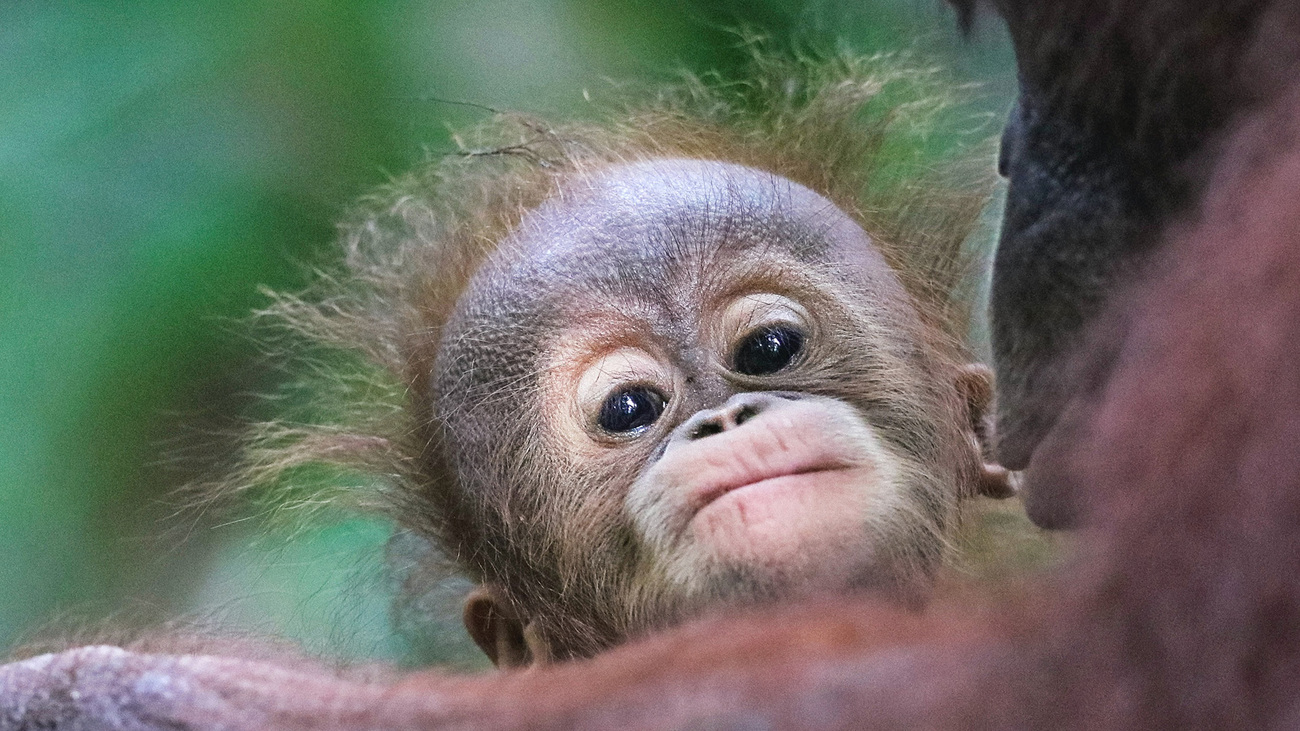
Deforestation
Agriculture, mining, and commercial logging all cause deforestation in Africa and Asia. In 2019, 12 million hectares of tropical forests were destroyed and, due to civil unrest in many of the affected areas, it’s very difficult to maintain effective conservation efforts.
Illegal poaching
Apes are hunted for bushmeat, which once only provided food for local communities but is now a huge commercial market. Consumers in Asia associate eating bushmeat with high status and it has become a luxury product with high price tags. This has increased demand and increased hunting in both Africa and Asia.
More than five million tonnes of bushmeat are taken from the forests in the Congo Basin each year, an area home to chimpanzees, gorillas, and bonobos.
Disease
The transmission of diseases between humans and wildlife is a serious problem for both us and the animals. More than 70% of diseases that have emerged in humans in the last century have come from wild animals, including Ebola, HIV, monkeypox, and COVID-19.
However, that’s only one side of the story. Humans also pass diseases to wildlife—species that are far less equipped to deal with such outbreaks. In the 1990s, Ebola outbreaks in the Republic of the Congo killed as much as 95% of chimpanzees and gorillas living in certain areas. In the following decades, thousands more animal lives were lost to the disease.
Great apes are particularly susceptible to respiratory diseases, so there was much concern when some gorillas tested positive for COVID-19 in 2020.

FAQs
What is an ape?
An ape is a primate, a type of mammal. They are sometimes informally grouped together with monkeys, but they are actually completely different families. The easiest way to differentiate between the two is by looking for a tail—monkeys have them, and apes don’t.
Apes come in various shapes and sizes. The smallest gibbon species weighs as little as 5.5 kilograms and the largest gorillas weigh an astonishing 220 kilograms.
What are the great apes?
Great apes are the larger and more intelligent species of apes. They are the members of the Hominidae family. The great apes include chimpanzees, gorillas, bonobos, and orangutans.
The other type of ape is the lesser ape, which refers to gibbons. There are around 20 species of gibbons altogether, and they live primarily in tree canopies in Asian rainforests.
Do apes have tails?
Apes do not have tails, but they do have tailbones—remnants of lost tails. The absence of a tail is the easiest way to distinguish between an ape and a monkey.
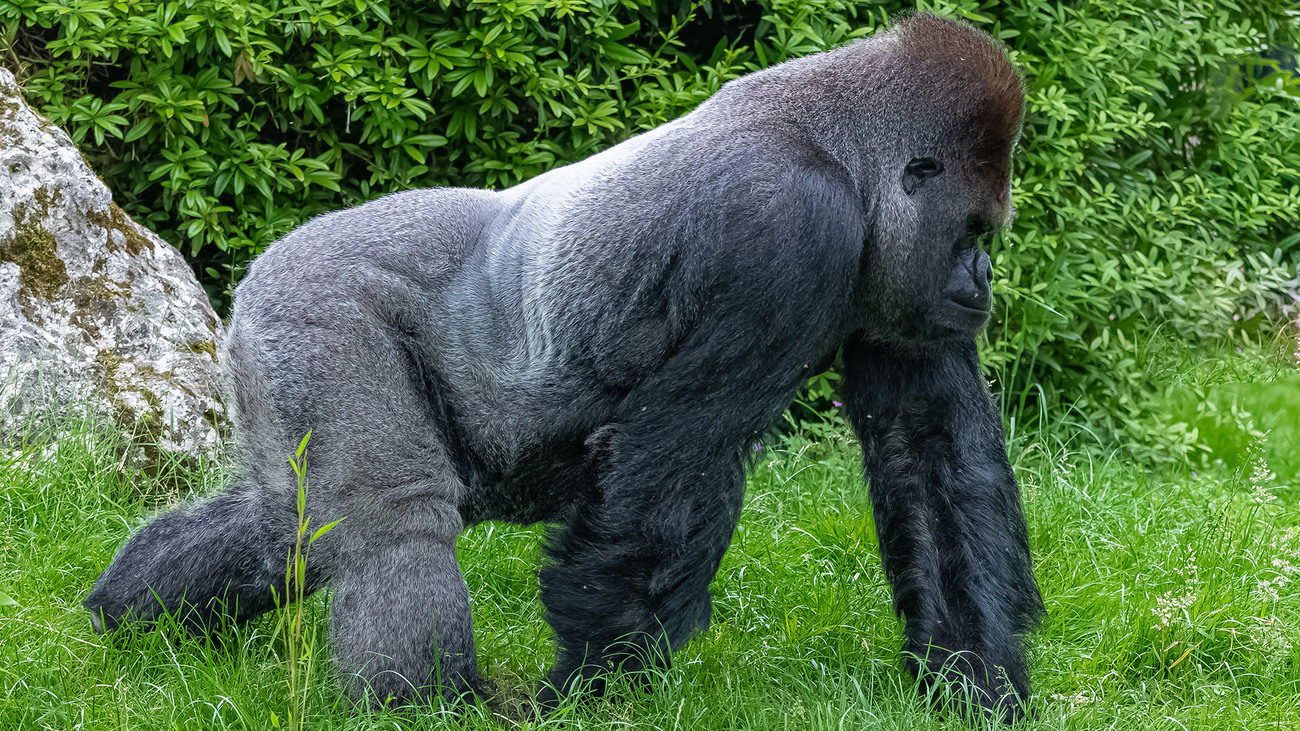
Are monkeys apes?
Monkeys are primates, but they are not apes. They lack the size and intelligence levels associated with apes.
However, they do share several similarities: most primates have hands adapted for grasping, long lifespans, slow reproduction, and complex social groups, and they rely on vision more than smell.
How long do apes live?
Apes live between 20 and 45 years, depending on the species. The longest-living ape in captivity, a western lowland gorilla in Berlin, is currently 65 years old. There are also reports that an animal actor in the 1930s, Cheetah the Chimpanzee, lived to be approximately 80 years old.
In the wild, the average lifespan of a gorilla is 35 years old. Chimpanzees live for about 45 years. Bonobos have the shortest typical lifespan of any ape, with a range of 20 to 40 years. Orangutans typically live for 30 to 40 years. Gibbons—the lesser apes—can live for up to 25 years in the wild.
Can apes swim?
Although most mammals can swim, all of the great apes lack this instinctive ability. This includes humans, who can only swim after learning and practising.
However, it has been documented that apes may be able to learn to swim in the right conditions. Footage of chimpanzees and orangutans swimming has been caught on camera in recent years.
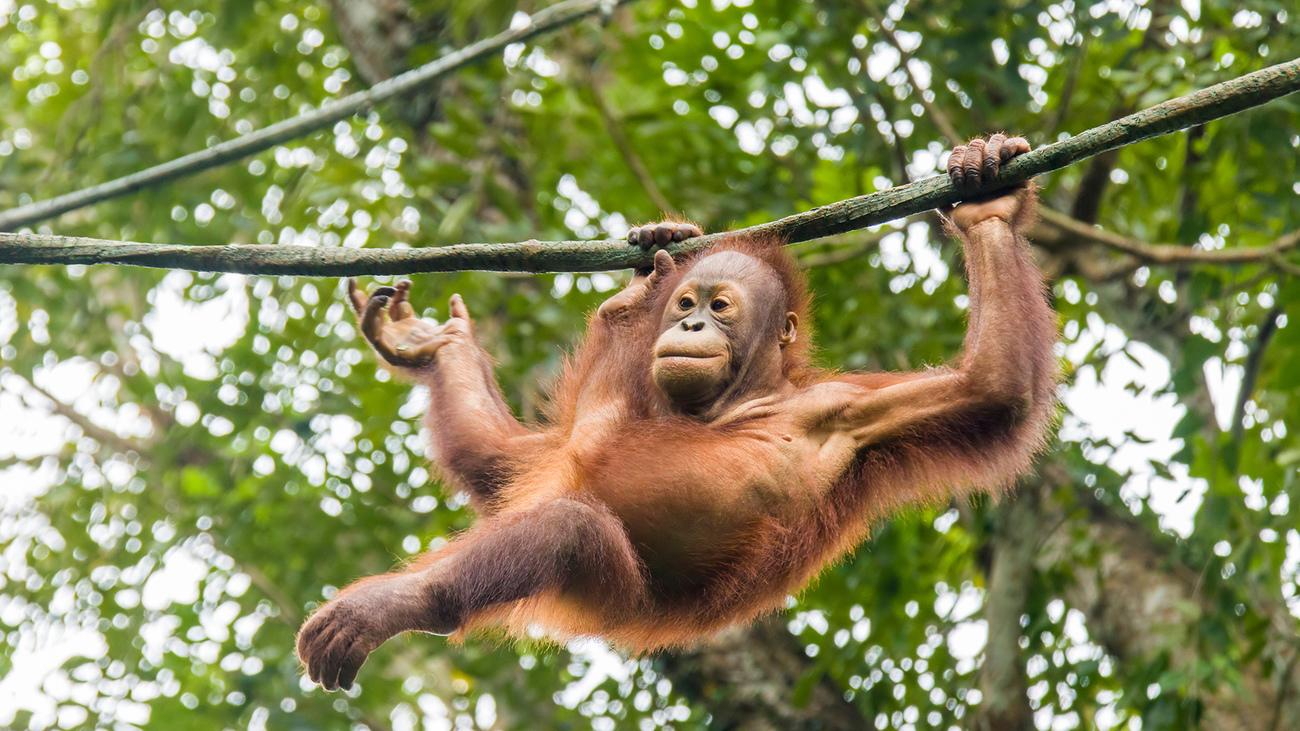
Do apes eat meat?
Apes are all primarily vegetarian, eating a variety of fruit, leaves, and other vegetation.
However, some species, such as orangutans, have been known to occasionally and opportunistically eat meat, while gibbons will eat small birds and bird eggs. The ape that most commonly eats meat is the chimpanzee. Over 45 different vertebrate species appear in the chimpanzee’s diet, including monkeys and wild pigs.
A review paper recently reported that over 89 species of primates eat meat sporadically to consume micronutrients that a plant-based diet doesn’t provide.
What do apes eat?
Apes live in rainforests and primarily eat plants and fruits, although they can also eat some small invertebrates. In addition, orangutans have been known to eat small birds and bird eggs, and chimpanzees can eat some vertebrate species, including monkeys and wild pigs.
Some apes prefer ripe fruits, while others choose to eat more leaves. Some apes will also eat tree bark and nutrient-rich soil to supplement their diets. Because they are mostly vegetarian, it’s often necessary for apes to spend a lot of time eating to gain enough nutrients to sustain their large bodies.
What is a group of apes called?
A group of apes is called, somewhat inexplicably, a ‘shrewdness’.
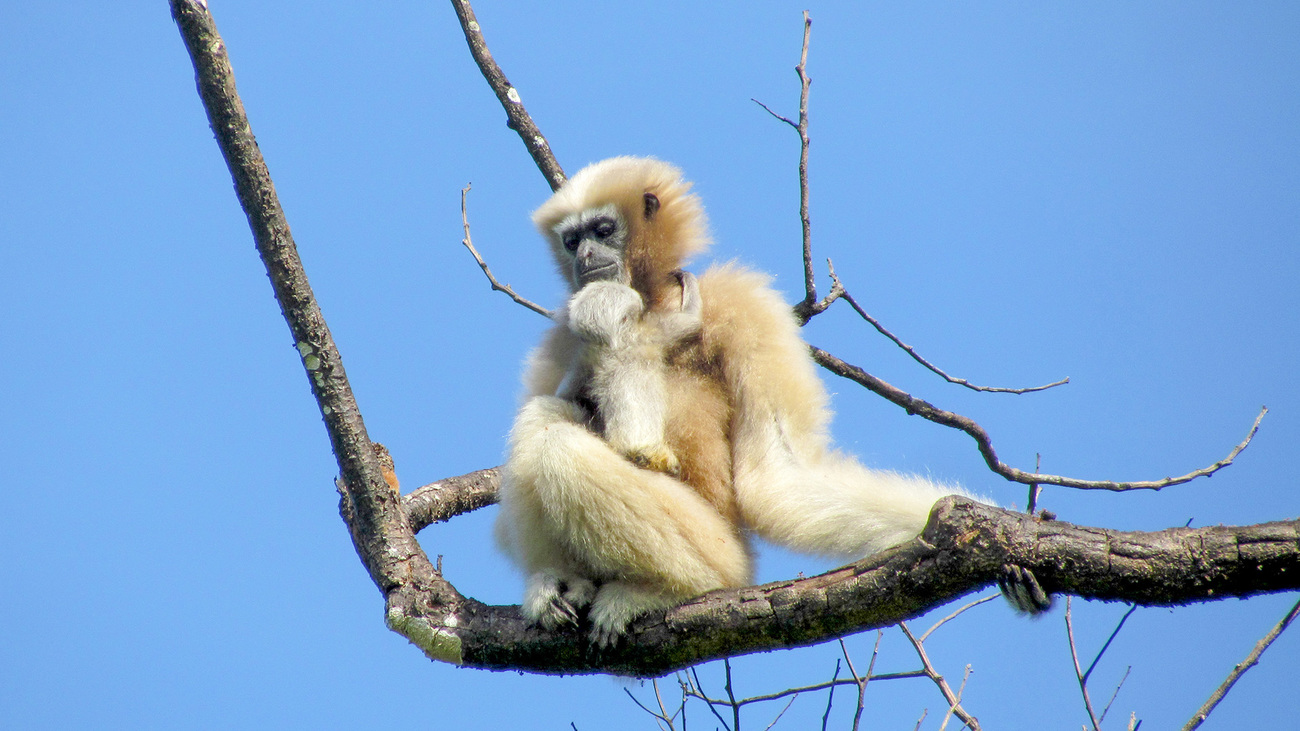
Our work
In 2020, IFAW supported the rehabilitation and release of two critically endangered orangutans. Our close partner, Center for Orangutan Protection, took over management of a wildlife park and discovered Ucokwati and Mungil to be candidates for release back to the wild The mother, Ucokwati, was rescued in 2011 from an amusement park, where she had been on display since she was a baby. After she was rescued and taken to a rehabilitation centre, she gave birth to a daughter, Mungil. In 2022, the two were released into 20 thousand hectares of protected land in Borneo, which is part of the natural habitat and historical range of orangutans.
Their progress is currently closely monitored by local rangers to ensure they are thriving in their new home. Projects like these are essential for the survival of orangutans, whose natural habitat is in danger of being almost completely destroyed by 2030.
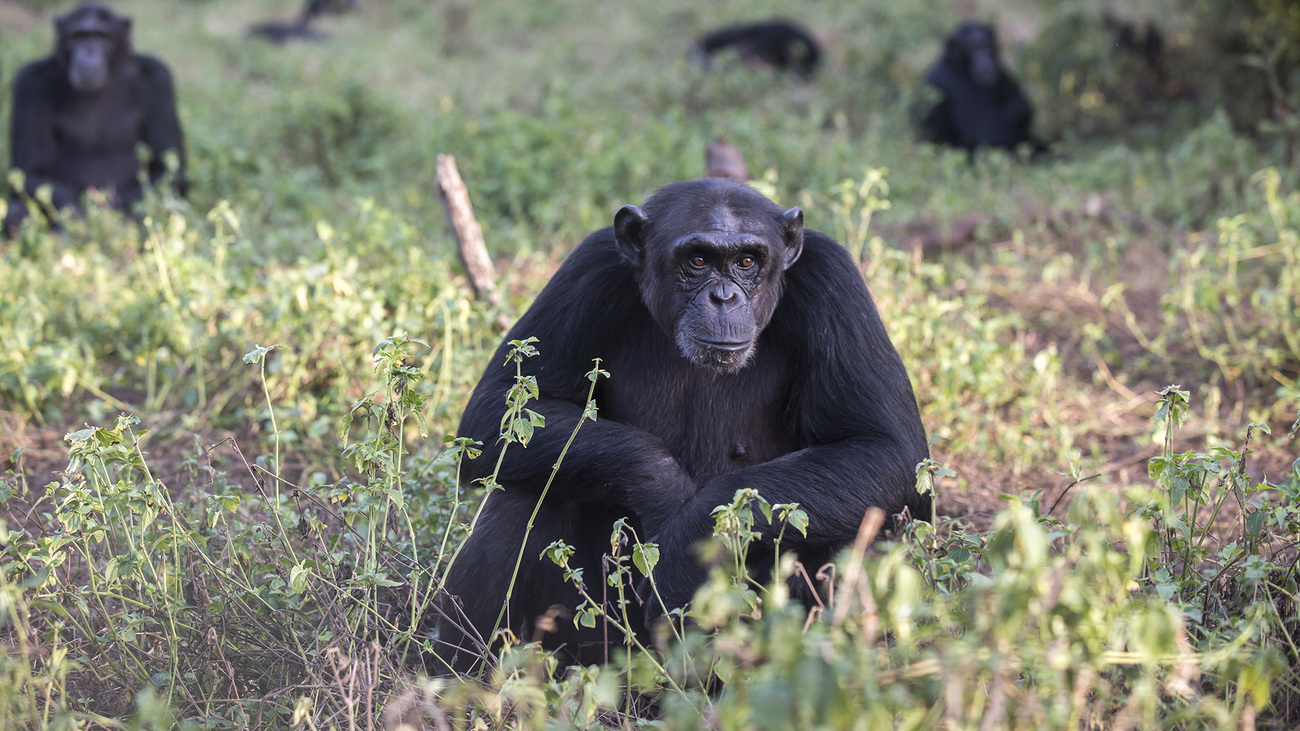
How can you help?
Donate today to help protect apes from illegal poaching and deforestation. You can also find more information on all our ongoing projects.
